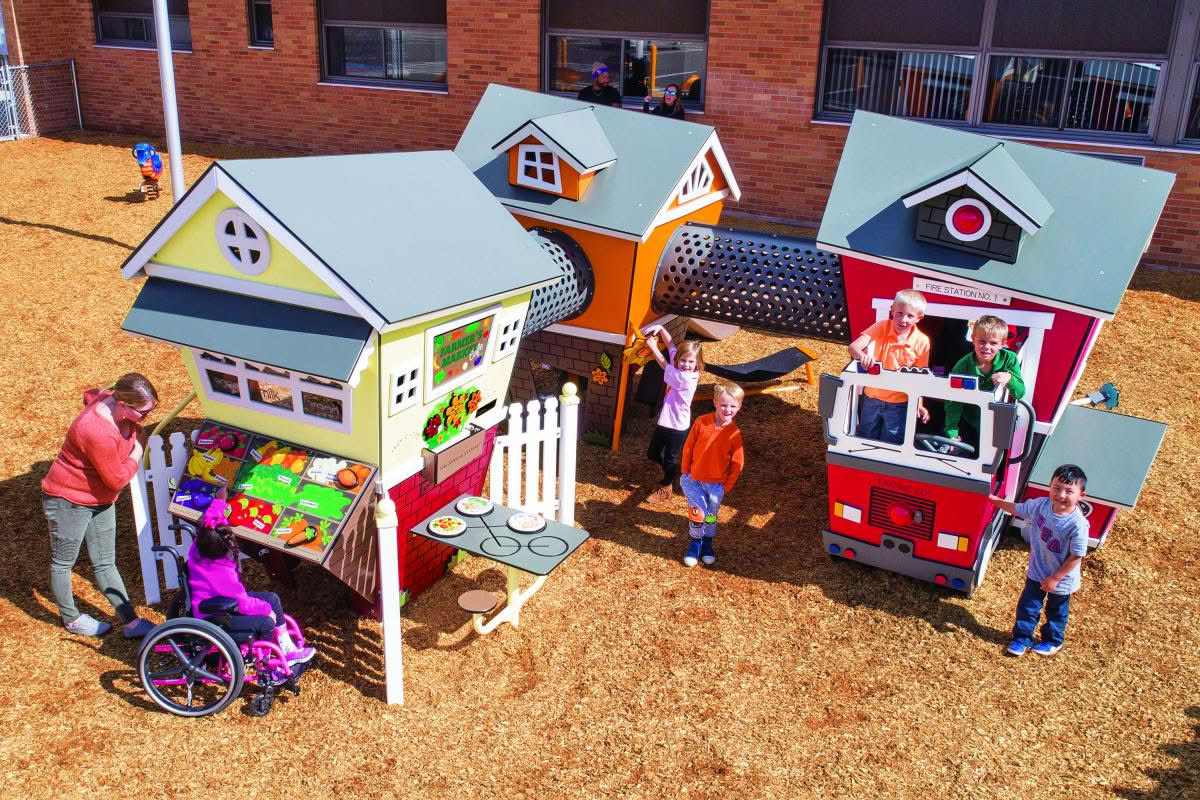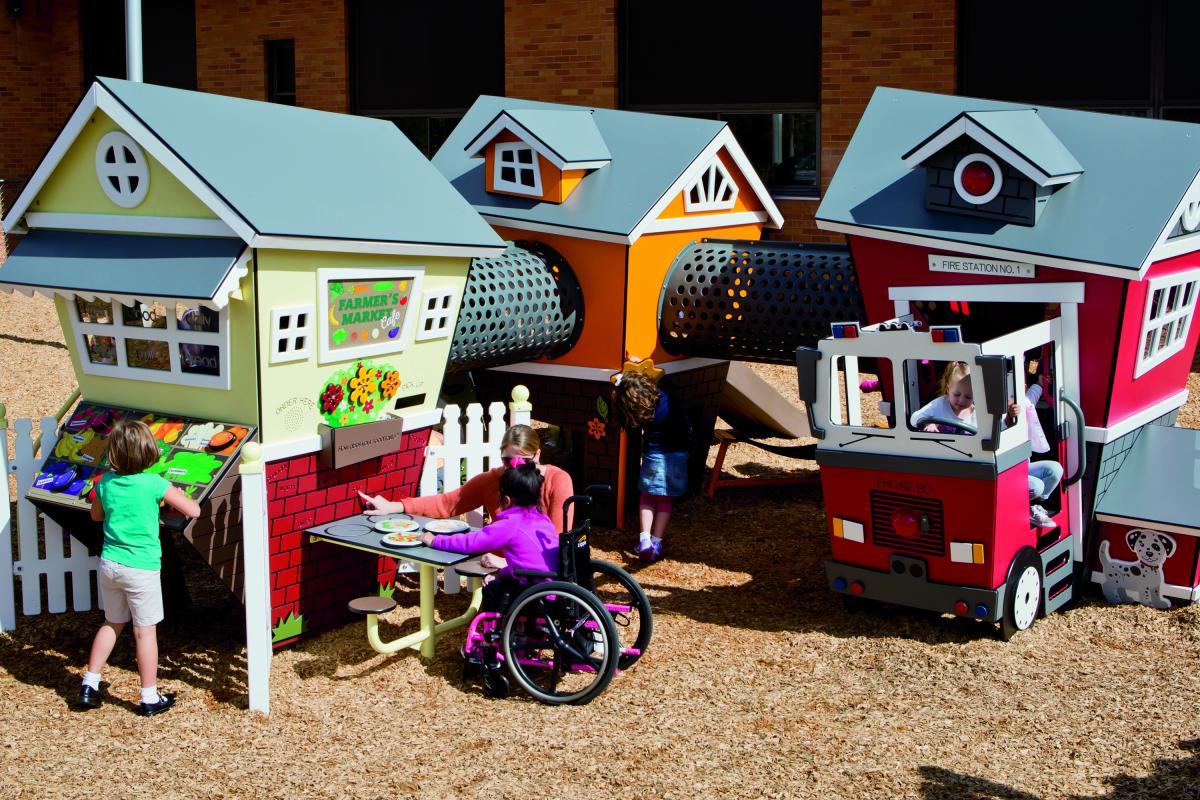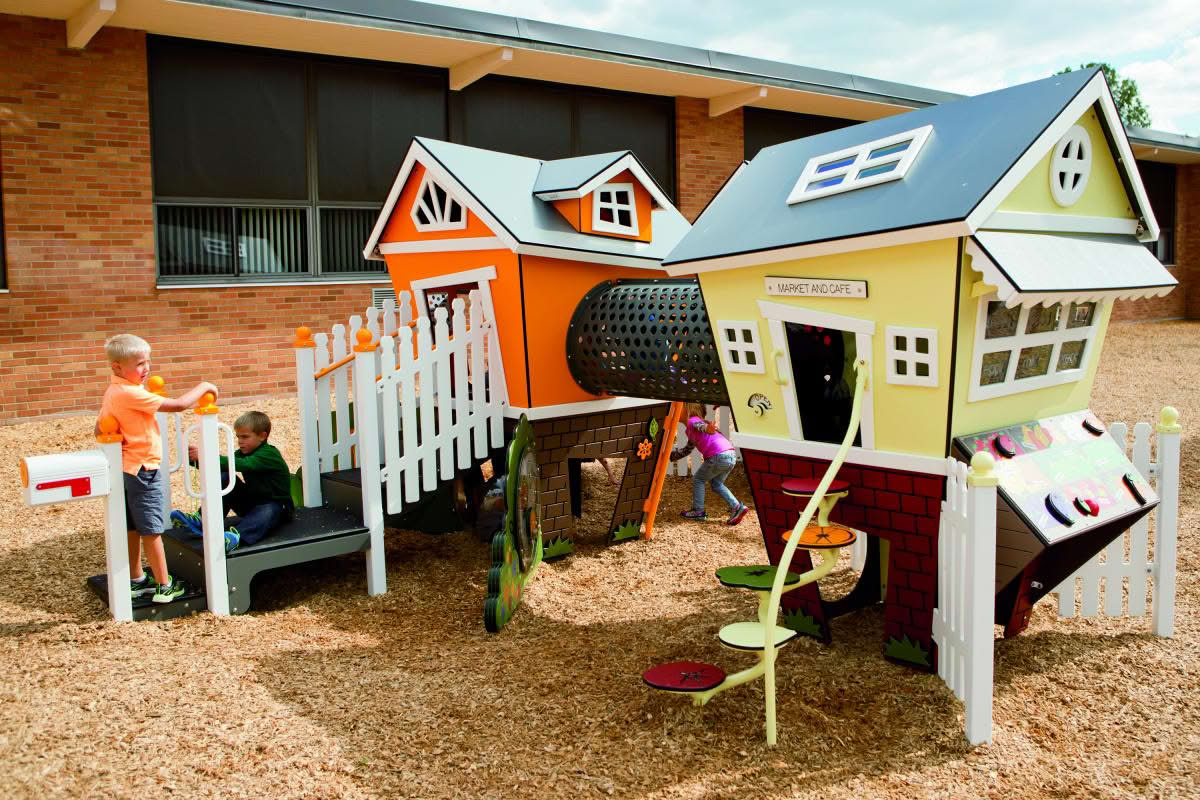The Benefits of Free Playtime on the Playground
How play experiences positively impact students physical, social-emotional, and sensory development.
SPONSORED CONTENT
Communicator
February 2018, Volume 41, Issue 6
Making time for free, unstructured play is tricky in our 24/7 world, but research tells us that carving out time and space for play is worth it. Playtime is one of the most important elements of a child’s growth and development. In free play, children get to be in control, letting their imagination lead the way. There may be rules and roles, but the children get to set them.
Play experiences don’t just impact a child’s physical development, they support mental, social, emotional and sensory development as well. When they play, children lay a foundation for vital skills like learning, creativity, discovery, problem-solving and independence. And they have fun while doing it.

Children enjoy free, unstructured play when they have a safe, inspiring space that’s age-appropriate. There should be a wide range of interactive elements that provide different experiences for different types of growth. Language development, sensory investigation and discovery, movement and motor skills are all important. When you put these different experiences together, you support whole-child development—the full scope of growth that leads to healthy, well-rounded children who can succeed in the world.
Dedicated spaces like playgrounds offer an ideal setting for free, unstructured play. A good playground is thoughtfully designed to meet children’s needs—while creating opportunities for parents to join in.
While playground staples like slides and monkey bars still have a valuable role to play, today’s playgrounds can really offer some cool, unique features. Landscape Structures, a Delano, Minn.-based commercial playground equipment designer and manufacturer, designs playground equipment that is fun and offers learning opportunities.

With guidance from the National Head Start Association and Too Small to Fail, Landscape Structures has created a range of developmentally appropriate activities for several of their Smart Play® playstructures. The Smart Play line takes kids from early crawling exploration on up to active climbing and social play. This line packs a lot of activities into compact structures and helps span a critical period of childhood development, making them ideal for early learning centers and school playgrounds. As more schools move to incorporate early childhood programs on their campuses, Smart Play playstructures are a perfect solution to meet the needs of this age group.
The Loft, Fire Station and Market Cafe playstructures have various climbers, slides, tunnels and crawl spaces to challenge the physical dexterity of toddlers and preschoolers. Even more, a range of developmentally appropriate activities were incorporated in the design including literacy prompts designed to engage children and adults in language-rich conversations. Playground visitors might talk about colors and shapes, healthy food, fire safety and more. When adults and children play together, it supports learning across key developmental domains including literacy, math, science, nature, social-emotional development, nutrition and physical activity.

To increase the learning opportunities, two of the three playstructures can be connected to enhance the imaginative fun and physical activity levels. Or playground designers can combine the Loft, Fire Station and Market Cafe to create a whole village that’s designed to be playful and fun.
Here’s the bottom line: Don’t overlook free, unstructured play as something that’s trivial. When you give your children time to play, you boost their physical, mental, social, emotional and sensory growth.
Learn more about Landscape Structures’ partnership with Too Small to Fail and the Smart Play playstructures by visiting playlsi.com/smart-play, and contact your local playground consultant to design a playground that meets your school’s needs.
—
Copyright © 2018. National Association of Elementary School Principals. No part of the articles in NAESP magazines, newsletters, or website may be reproduced in any medium without the permission of the National Association of Elementary School Principals. For more information, view NAESP’s reprint policy.

